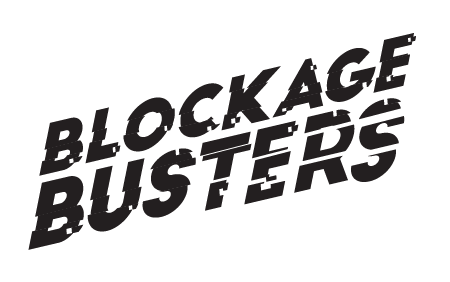Blockage Busters
|
|
|
|
|
|
|
When something clogs our pipes, we send in the blockage busters. These are the people willing to dive into the filth, so you don't have to. They'll tackle any blockage no matter how big or disgusting it may be. They do this work every day without acknowledgement or praise.
We've collected a few clips of our blockage busters hard at work. Scroll down and check it out. Head over to our social media if you want to give them a shoutout! #blockagebusters
Let's all give our blockage busters a hand. If your'e using wet wipes, just bin them!
Lower Molonglo Water Quality Control Centre Bioreactor
During the treatment process our teams add micro-organisms to the wastewater. These organisms help remove nitrate from our waste by releasing it into the atmosphere as nitrogen gas. We do this because nitrate is harmful to river ecosystems. The bio reactor uses jets along the bottom of the tank to pump oxygen throughout the wastewater. This helps the micro-organisms remove any remaining nitrate.
Over time solids can settle along the bottom of the tank and block the jets. Once there’s enough build-up our Blockage Busters need to drain the tank and hose out the clumps.
Watch the video below to check it out for yourself.
Lower Molonglo Water Quality Control Centre Sludge Holding Tank
‘Sludge’ is the result of our waste sticking together during the treatment process. We eventually turn this substance into Agri-Ash for farmers.
We can only process so much sludge at a time. Freshly collected sludge is stored in a massive tank where a large arm sweeps the contents into a central drain for later processing. Wet wipes are tough and, no matter what we do, refuse to break apart. They’ll often slip into this tank where they bog down the arm and clog the drain. When this happens, our Blockage Busters need to empty the tank and jump inside – where they then pull apart the blockages and scoop out the wet wipes by hand.
Watch the video below to see our Blockage Busters in action.
Lower Molonglo Water Quality Control Centre Wet Well
The Lower Molonglo Water Quality Control Centre houses a wet well that’s designed to hold Canberra’s wastewater. This helps our teams regulate the amount of waste being processed by the facility. Wet wipes, and other nasties, often make their way into the well. This can cause blockages and other issues throughout the treatment process.
Our Blockage Busters have to climb inside the wet well and remove this rubbish by hand. It’s probably one of the grossest jobs Icon Water has to offer. Check out the video below to see what they have to face for yourself.
Fyshwick Sewer Pump Station
The Fyshwick Sewer Pump Station collects waste from surrounding suburbs and sends it all to our Lower Molonglo Water Quality Control Centre. Cleaning this station is a big job that can take our Blockage Busters two hours to complete (on a good day). This isn’t even factoring setup times or waste disposal. Meanwhile, wet wipes are always finding ways to complicate the process.
Check out the video below to catch a glimpse of the Fyshwick SPS when it’s relatively clean!
Commonwealth Avenue Sewer Pump Station
Most of our sewerage network uses gravity to move wastewater to our treatment plant. When gravity isn’t enough, like when moving sewerage over a hill, we need to use a pump station. The Commonwealth Avenue Pump Station helps us move wastewater past Lake Burley Griffin by shifting it over a bridge.
Wet wipes, and other nasties, are a big issue for this pump station. Our Blockage Busters are always having to climb inside and pull apart huge clumps of rag and debris. Check out the video below to see for yourself!
The Vortex
Vortexes lower wastewater at a controlled rate. They work just like larger versions of the drain in your bathtub. We dangled a camera inside our largest vortex to see what it looks like up close.
Watch the video below to check it out for yourself!
Acton Syphon Cleaning
A lot of North Canberra’s sewage flows through the Acton Syphon. This syphon helps filter our waste on the way to the Lower Molonglo Water Quality Control Centre. It does this by using a screen to catch wet wipes and other garbage. By doing this the syphon stops larger blockages forming further down the network - like in the pipes running under Lake Burley Griffin.
Our Blockage Busters can only get inside the syphon during low traffic periods, like when everyone's asleep! As a result, our Blockage Busters often get to work before the sun comes up.
The only way to clear out the syphon is with a pitchfork, click below to see for yourself!




